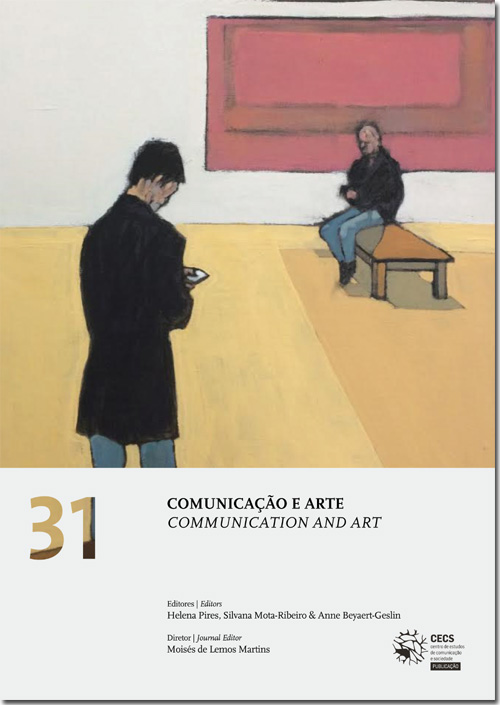Communication of art via open research: on cultural policies, heritage and reception of innovation in art
DOI:
https://doi.org/10.17231/comsoc.31(2017).2623Palavras-chave:
Art communication studies, art literacy, art reception, intermedia sociologic methodology, public communication of artResumo
This article debates some main modes of art communication within the urban public space, and their interpretation through Open Research. In particular, it discusses communication regimes in places where cultural and artistic events occur, such as the museum. One of the communicative phenomena circulating there is informal art literacy, which is a different and sometimes opposite process in relation to the formal education at school. Having this aim in mind, firstly two core concepts within Art Communication Studies, which are crucial to this debate, are defined: Public Communication of Art-PCA and art literacy. Secondly, questions pertaining to art communication are raised: the definition of cultural policies that allow cultural inclusion of diverse art publics segments; the role of digital devices to improve the understanding of cultural heritage; the more adequate communication and management strategies for improving publics literacy; the reception process undertaken by cultural audiences around art ideas and concepts shared through art events. Thirdly, such questions are framed within the main theoretical and authors’ positioning in Art Communication Studies. Next, some brief practical advices and recommendations concerning how to develop a research on communication within art worlds are exposed in two parts: the first part suggests some hypothesis corresponding to the previous formulated questions. The second part establishes a synthetic and practical agenda for doing a research on this subject. Some emergent sociological apparatuses, produced to improve the social and cultural impact of art communication, are also presented. Finally, specific modes and targets of this impact are discussed.
Downloads
Downloads
Publicado
Como Citar
Edição
Secção
Licença
Os autores são titulares dos direitos de autor, concedendo à revista o direito de primeira publicação. O trabalho é licenciado com uma Licença Creative Commons - Atribuição 4.0 Internacional.












